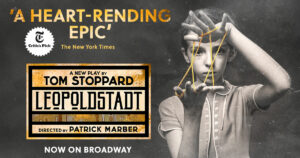Leopoldsdadt

Family therapists love a good genogram. For those unfamiliar with this term, a genogram is a comprehensive family history framed through the psychological lens of Family Systems Theory. Family Systems Theory is a relationally oriented approach to therapy emphasizing the formative importance of the family landscape. Systemic therapists believe that relational patterns are often passed down from one generation to the next and that early experiences shape adult patterns and choices.
In my work with therapy clients, our third and sometimes also our fourth session of therapy are entirely focused on a constructing a comprehensive genogram. I begin by drawing a map of circles and squares with horizontal lines connecting married couples and vertical lines between the married couples, connecting parents to their children. We discuss each family member’s role within the family unit, how siblings and parents get along, what parental relationships are like and what clients understand about what their parents’ lives were like growing up. I am particularly curious about grandparents and their marriages. It is surprisingly common to know very little about how one’s grandparents met or what their early courtship was like. I encourage clients who are comfortable doing so to ask their parents to tell them more about their grandparents. If grandparents are still living, I encourage clients to also speak with them and be curious to learn as much as they can about their lives. Family Systems Theory assumes that our grandparents’ stories are essential to our own, and that the human impulse to deny painful parts of a family history can be quite strong. The past is worthy of exploration as a gateway to deeper self-awareness and healing.
Tom Stoppard’s magnificent play, Leopoldstadt, is anchored through a meticulous genogram which is displayed for the audience in the middle of the playbill and also presented as a primary staging element of the play’s opening scene, titled “1899”. The horizonal and vertical lines track the 27 Austrian family members of the Merz and Jakobovicz family tree whose journey is traced through five scenes, each marked by the year – 1899, 1900, 1924, 1938 and 1955. Emilia and Israel Merz and Estelle and Solomon Jakobovicz are “machatunim” — a Yiddish term referencing that their children Eva and Ludwig are married to each other. But this sophisticated, cultured group are not likely to speak Yiddish. They have assimilated into Austrian life, and we meet them on Christmas Eve 1899 gathered around a festive, unYiddish looking tree. One of the gleeful children places the Jewish star of David atop the tree and is told to take it down. The family and the audience erupt in laughter as the families’ conflicts about their Jewish faith shine brighter than the rejected Jewish star. The tension for the survival of the Jewish people and the lack of a Jewish homeland are consistent threads of conversation. Some family members have converted to Catholicism and several tense conversations challenge the characters and the audience to explore how difficult it is to acknowledge and understand current events as they unfold.
Denial and repressed memories shape each scene. By 1955, a dapper young Leo is one of only three remaining family members. Like Tom Stoppard, Leo has only a vague sense that he is Jewish. Like Stoppard, Leo writes popular, funny stories. Like Stoppard, Leo has changed his name so that it sounds less Jewish. Leo’s demeanor reflects how temping it can be to avoid the past. Even as his pasts lingers within and shapes who he has become.
Leopoldstadt is running through January 31, 2023 at the Longacre Theater in Times Square. While obviously intense, this important story challenges audiences to confront the impulse to look away.
